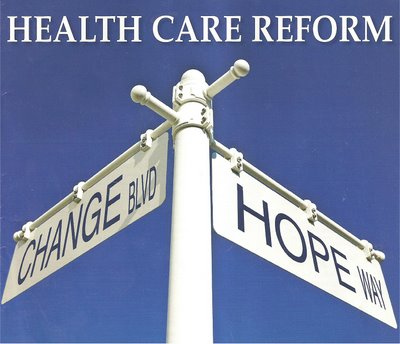After Romney's defeat, the ACA stayed in impact throughout of Obama's presidency regardless of Republican efforts to reverse it. In the 114th Congress, Republicans passed a costs that would have repealed much of the ACA, but the costs was vetoed by Obama. After winning the 2016 presidential election, President Donald Trump assured to "reverse and replace" the ACA with a brand-new law.
government, but with 52 seats in the 100-member Senate, Republicans would still need to rely on at least some Senate Democrats to conquer a filibuster. Nevertheless, Senate guidelines offer a special spending plan guideline called reconciliation, which permits particular budget-related expenses to bypass the filibuster and be enacted with a basic majority vote.
In 2015, U.S. healthcare costs were approximately $3. 2 trillion, or nearly $10,000 per person usually. Significant categories of expenditure consist of healthcare facility care (32%), doctor and scientific services (20%), and prescription drugs (10%). U.S. costs in 2016 were significantly higher than other OECD countries, at 17. 2% GDP versus 12.
For scale, a 5% GDP distinction represents about $1 trillion or $3,000 per person. A few of the many reasons pointed out for the cost differential with other countries include: Greater administrative expenses of a personal system with numerous payment processes; greater costs for the same services and products; eduardojswb820.over-blog.com/2021/02/the-smart-trick-of-what-is-a-health-care-premium-that-nobody-is-talking-about.html more expensive volume/mix of services with higher use of more expensive specialists; aggressive treatment of very ill senior versus palliative care; less use of government intervention in prices; and greater income levels driving higher need for healthcare.
How How Does Electronic Health Records Improve Patient Care can Save You Time, Stress, and Money.
There is ongoing argument whether the existing law (ACA/Obamacare) and the Republican options (AHCA and BCRA) do enough to attend to the cost difficulty. Both the Republican Politician Home AHCA and Senate BCRA bills have proposed significant reforms relative to existing law (ACA) that would considerably lower the number of persons covered, moderately lower the budget plan deficit over a years, reverse the tax increases on the top 5% (generally the top 1%), dramatically cut Medicaid payments (25-35%) that benefit lower-income persons, and broaden choice by permitting lower quality insurance coverage to be bought at lower prices for the young and middle-aged.
States would be permitted more flexibility in developing necessary health benefits (i. e., insurance coverage policy content). Modification tax credit/subsidy formulas used to help spend for insurance coverage premiums (initially age-based, later customized to income-based) and get rid of a "cost-sharing aid" that decreased out-of-pocket expenses. Provide moneying to health insurers to support premiums and promote market involvement, through a "Long-Term State Stability and Innovation Program" with features comparable to a high-risk swimming pool.
Lower Medicaid payments relative to existing law, by capping the development in per-enrollee payments for non-disabled children and non-disabled grownups, by utilizing a lower inflation index. Repeal taxes on high-income earners developed under ACA/Obamacare, reverse the annual fee on medical insurance companies, and delay the excise tax on high premium health insurance (the so-called "Cadillac tax").

youths, instead of three times, unless the state sets a various limit. Remove federal cap on the share of premiums that may go to insurers' administrative costs and earnings (the "minimum medical loss ratio"). Popular opinion concerning the Republican politician House (AHCA) and Senate (BCRA) expenses was extremely unfavorable (i.
The Single Strategy To Use For Countries Whose Health Systems Are Oriented More Toward Primary Care Achieve:
Views were divided along celebration lines. For example, the monthly Kaiser Family Foundation health tracking poll for Might 2017 suggested that: More view the Republican politician AHCA unfavorably (55%) than favorably (31%). Views are split along celebration lines, with % in favor of AHCA: Democrats 8%, Independents 30%, Republicans 67%. Although traditionally more individuals saw the current law (ACA/" Obamacare") unfavorably than positively, in Might 2017 more had a beneficial view (49%) than unfavorable (42%).
Health care specialists from throughout the political spectrum liberal, moderate, and conservative agreed that the House Republican politician health care costs was unworkable and experienced deadly defects, although specific objections varied depending upon ideological viewpoint (how much is health care). Professionals concurred that the costs fell far short of the objectives laid forth by President Donald Trump during his 2016 project "Budget-friendly coverage for everybody; lower deductibles and health care costs; much better care; and no cuts to Medicaid" due to the fact that the costs was (1) "nearly certain" to reduce general health care coverage and increase deductibles and (2) would phase out the Medicaid growth.
CBO estimated in May 2017 that under the Republican AHCA, about 23 million less people would have health insurance in 2026, compared to present law. AHCA (Republican healthcare bill) effect on earnings circulation, since the year 2022. Net advantages would go to households with over $50,000 earnings usually, with net costs to those listed below $50,000.
Cuts to Medicaid more than balanced out tax cuts, leading to moderate deficit reduction. Modifications in Medicaid Costs Under the Better Care Reconciliation Act Compared to CBO's Extended Baseline Share of Nonelderly Grownups Without Health Insurance Coverage Protection Under Current Law and the Better Care Reconciliation Act, by Age and Earnings Classification, 2026 CBO forecasts of individuals without medical insurance under 65 years of age (%) under different legal propositions and existing law.
The Main Principles Of How To Lower Health Care Costs
e., the actuarial worth, or percent of costs a given policy is expected to cover). Other groups have actually assessed some of these aspects, along with the distributional impact of the tax changes by earnings level and effect on task development. The outcomes of these analyses are as follows: According to each of the CBO scores, passage of the Republican expenses would lead to a remarkable reduction in the variety of persons with medical insurance, relative to existing law.
In 2018, most of the decrease would be triggered by the elimination of the penalties for the private required, both directly and indirectly. Later on decreases would be because of decreases in Medicaid enrollment, removal of the individual required penalty, subsidy decrease, and greater expenses for some persons. By 2026, an estimated 49 million people would be uninsured under the Senate BCRA, versus 28 million under existing law.

According to White Home Communications Director Michael Dubke, the analysis tried to utilize comparable approach as the CBO. Other people and companies such as the Brookings Organization and S&P estimated sizable coverage losses due to the AHCA. According to a report published by the Center on Budget Plan and Policy Priorities, the legislation would cause 3 million more kids (specified as persons under 18 years of ages) losing healthcare protection.
Approximately $1. 2 trillion less would be spent over that time, while $900 billion less in tax profits would be collected. Medicaid costs would be cut substantially. Taxes on the approximately top 5% of income-earners under present law would significantly drop. CBO AHCA Modified March 24: In settlements after the preliminary report, the law was customized such that the CBO estimated the deficit reduction would total about $150 billion over a decade.
Some Known Details About How Much Would Single Payer Health Care Cost
For scale, CBO has estimated that the U.S. will include around $9. 4 trillion to the financial obligation total over the 2018-2027 duration, based upon laws in place since January 2017. The $321 billion for that reason represents a decrease of about 3. 5% of the overall financial obligation boost over the decade, while the $150 billion is about 1.